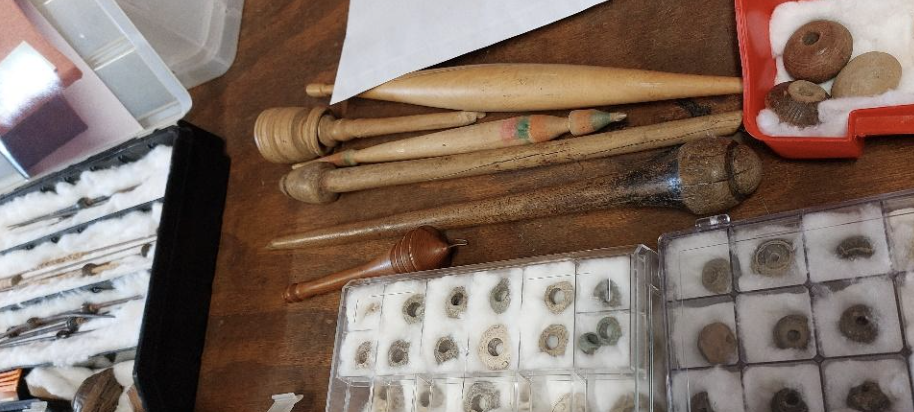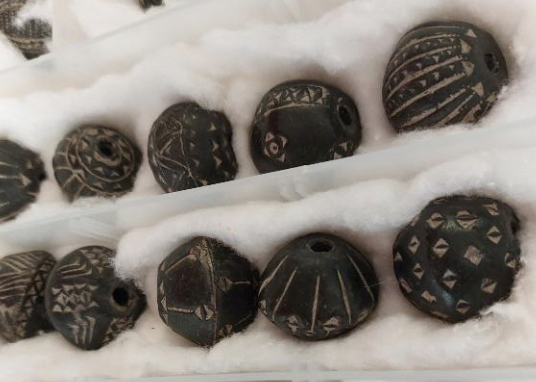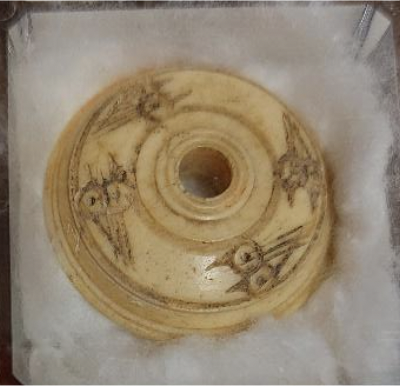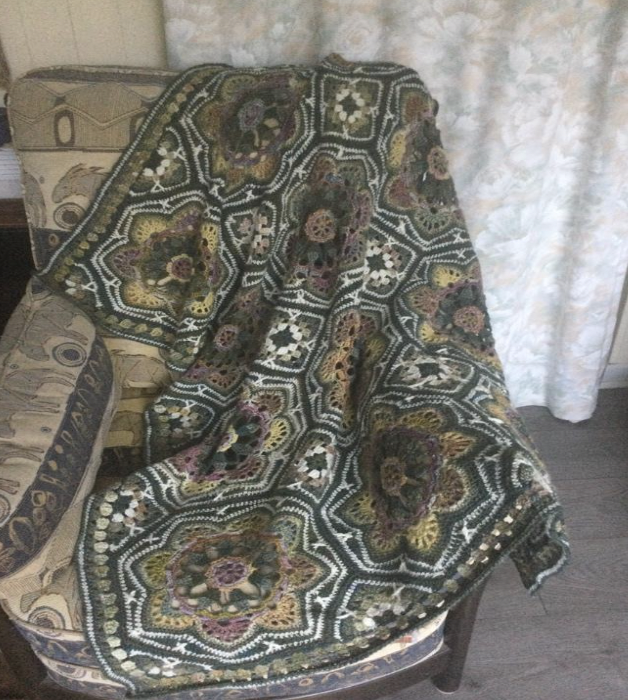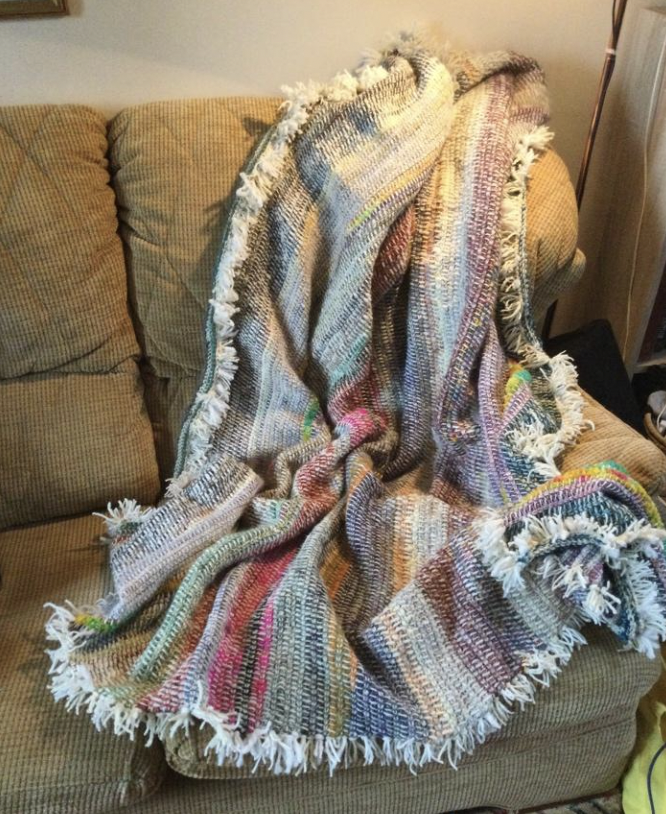March 2023 newsletter
Chairperson’s message
This is my first newsletter since returning from my holiday in Australia – what a difference in temperature. I went from it being 29’ in Sydney to -10’ in London. I certainly needed all the heating on when I got home!
I couldn’t resist the above picture as this cheeky looking lamb reminded me that Spring is just around the corner with all the warmer days to look forward to.
As well as warmer days the Guild can look forward to the Skills Day in April and the Fleece Fair in June. So many members are getting involved in both of these that it is good to see the enthusiasm that makes it all worthwhile. We also have an exciting range of speakers booked for the rest of the year thanks to Janet who has worked with Hilary to arrange it all. I’m really looking forward to those.
As we did so well with the entries into the National Exhibition last year I would like to remind you that the next one will be held in 2024, so get your thinking caps on for what you can enter! As far as I know there will not be a theme for this one.
At the last couple of meetings it was lovely to welcome so many new members to the Guild. I hope you enjoy your time with us, and we all look forward to getting to know you better as time goes on.
Guild competitions 2023
The theme for this year’s competitions is “HOLIDAY MEMORIES”.
The dates are:
September 16th Dyeing
October 21st Spinning
November 18th Weaving
It would be great to see more entries and they give an excellent opportunity to use some of that stash.
Committee Members from March 2023
Marilyn Biggs: Chairperson
Ian Waite: Honorary Treasurer
Norma Sanders: Honorary Secretary
Mandy Stead: Membership Secretary and Fleece Fair organiser
Jan Hopwood: Demonstration organiser
Sue Prosser: Tea/coffee rota and raffle organiser
Georgina Vye: Facebook page administrator
Kathy Wright: Sales page, Newsletter editor
Other roles:
Phil Hocking: Librarian
Jenni Llewellyn: Librarian
Guild programme 2023/24
March 18th: Patricia Isley -“My crafty life”.
April 15th: Skills day
May 20th: Jane Hunt and colleagues will be speaking on “The ancient art of distaff spinning and will run a workshop for 8 people at £15 per hea.,
June 17th: Fleece Fair.
July 15th: Isabella Whitworth will be speaking on “18th century dyeing in the South West
August 20th: Jennie Loader workshop on “Felt forage baskets” for 8 – 10 people Full day bookable workshop £25 a head including all materials. NO ACTUAL MEETING.
September 16th: Social spinning in the main hall with a Workshop by Pam Martin on making Yorkshire buttons in the back room from 11 am to 3 pm. Dyeing competition
October 28th: Daniel Harris of the London cloth company will be talking about his work rescuing woollen mills and making cloth. Spinning competition.
November 18th: Janet Phillips will be talking on “Designing Woven Fabric” Weaving competition
December 17th: Christmas social.
January 20th 2024: Brian Bond will be speaking on “My journey in Natural Dyeing”. Sales of seeds, dried dye stuffs and dyed wool fibre/yarn
Visit to the Association Library in its new home
On Tuesday Feb 2nd 7 members of the Somerset Guild made a trip to the Stuart Groom Memorial Library in Trowbridge Museum for the purpose of trialling the library’s lending system.
Janet Maher and her friendly and helpful team at the museum have been working hard to catalogue number, prepare a data base and set out a shelved, temperature controlled library for an extensive range of approx. 500 books.
The books both modern, out of print and antiquarian will be available for loan either in person or by postal system. A few of the more valuable, delicate, extra large and a range of pamphlets are for reference only.
The library will be ready for issue to all guild members who request library membership, (contact Janet Maher) at the end of February.
For anybody doing the COA this is an invaluable resource. The collection of natural dyeing resources is particularly interesting.
After an hour of browsing we all came away with interesting books to be returned after two months.
Trowbridge was a prominent mill town producing cloth which was sought after across the world. Housed in a grade ll listed mill, Trowbridge’s largest woollen cloth mill built in 1862-1863 the museum itself is well worth a visit.
By Sarah Basham
Whorls Around the World by Amanda Hannaford
After the AGM in February Amanda gave a very interesting talk supplemented by many drawings and photographs about spinning with spindles. This was greatly enhanced by sharing some of her impressive collection of spindle whorls which she has been collecting for years, all laid out in display boxes on the stage.
She said that over time fibres and wood have rotted leaving little behind, except for the whorls, so the history of spinning has been pieced together with artefacts which have been found. One of the earliest records of spinning is from an impression of a woven textile on a fired clay pot dating back about 28,000 years. Another 3ply twisted cord, probably of twisted bark, was found in The Rhone Valley in France dating to 46,000 BCE, that is from the Neanderthal era – was this spun with a spindle?
Spindles can be simple – a Hazura Lady from Kabul, Afghanistan was shown spinning using a simple pipe tied on to a piece of marble which worked as a flywheel to make the twist in the fibre.
Spindles come in all shapes and sizes. Whorls come in many different forms and weights, and the basic stick or shaft holding them varies considerably in size and shape. Spindles can be suspended or supported, and whorls can be located at the top, middle or bottom of a shaft. Some shafts do not have separate whorls but are shaped to give twist when flicked. However, all spin and put twist in fibre to make a thread or yarn.
She showed a picture of an old ‘kit’ with one shaft and several whorls of different weights. Amanda makes her own ‘kit’ putting modern CDs on a shaft to make a spindle. Starting off with 3 CDS she then removes them one by one as the weight of yarn increases on the shaft – this maintains the effectiveness and consistency of the spinning.
She showed a pictogram from the Codex Mendoza, which documented the lifestyle of the Aztecs in South America. This work was carried out by the Spanish when they invaded the continent, and sent back to King Philippe of Spain. Girls aged 3-4 would sit by their mothers and watch them spin, and by the age of 12 they would have their own ‘basket’ and spin in their own right using drop spindles.
The Arka spindle is neither supported nor dropped, and the whorl is in the middle of the shaft. One hand supports it at one end and the other hand spins off the tip to give a light even thread. This style is still in use today.
She showed many pictures of spindle spinning from the ancient Eqyptians, to the present day, much of it illustrating the spinning history in Europe. From French drawings on parchment (dated 1180), Italian spinning with an underarm distaff (1304), to a Dutch distaff on a stand (1310), and some showing 2 spindles working together. Much of this was presumably for flax.
Whorls could be flat bottomed cones, round beads, discs, odd shapes, grooved, and may be decorated with etched lines and paint. Large (3-4” in diameter) or tiny (less than 1cm). She showed a picture of a beautiful Bactrian Carved Afghan whorl made to look like a poppy seed, dated around 350BCE.
Whorls could be made of clay (glazed or natural), lead, copper, bronze, bone and ivory, often were beautifully carved, and of glass, shells and fossils. Wooden whorls probably rotted over time, but modern designs indicate how they might have been shaped and decorated.
Styles and decoration of whorls related to specific cultures and dates, but some are still made today. From the Alnac Culture in Mexico, those intricately carved with pelicans, flying birds, and bats from Ecuador, and round whorls from the islands of Paracas in Peru.
She also explained that the finding of whorls is important for understanding social history - salt glazed whorls from France and Germany found in Norfolk indicate the movement of peoples and knowledge from Europe to England, and the carvings indicate the development of civilizations, and their everyday lives.
And finally she showed a picture of the famous and somewhat mysterious sculpture ‘Venus de Milo’, with her cut off arms. However, with illustrative extensions, the arms showed she may have posed holding a distaff under one arm, and spinning away from her body with the other.
By Liz Pickman
SABLE ( stash acquired beyond life expectancy)
If, like me, you fall into the above category then it is time for drastic measures! So I have thought of a few ways to start to help rectify the situation.
The first thing I did was to teach myself a new skill, preferably one that takes a lot of yarn or fibre. I tried crochet – easier said and done when you are left handed and you choose a Janie Crow design as your first project but I persevered and finished my first blanket.
Then I remembered a skills day when Pam Mitchell taught some of us to do Tunisian crochet, so I decided to have a go at that too. Yet another blanket emerged from my stash! I just used any yarn I had and apart from using natural white for the main colour it was more a grab anything and use it until it ran out then choose something else. It used up quite a bit of the stash I had at the time but I overestimated how big it was going to be and it now covers a double bed!
Those are just two of the things I have done but my stash does not seem to be diminishing much as I keep on spinning!
I would be grateful for any suggestions of what I can do to lessen the stash further, just send your suggestions to Kathy Wright with a picture and perhaps we can make this a regular feature in the newsletter.
By Marilyn Biggs
Meet the makers
Hello folks, I’m Amanda Hannaford; I think I’ve been a member for at least 30 years (and I’m also a member of Liskeard Spinners, Peter Tavy and the Online Guild).
I’ve been a handspinner for nearly 40 years I think, and I know exactly when I got my first spinning wheel, because it was my 5th wedding anniversary present in 1986 (please don’t ask how many I have now, as I may have to lie!!). I’ve been dyeing for almost as long, and for several years Ginge and I ran a little Etsy shop and had a stand at Wonderwool (and a couple of other shows) selling our hand-dyed fibres and a few spindles.
For many years we both did various jobs on various Guild committees, and at one point we were both programme secretaries, one for Cornwall and the other for Somerset Guild; and, as for about 8 out of 12 months they meet on following days, we were able to arrange the same speakers. This is as well as me running the SW area biannual meetings and also being Journal rep on the GPC; this entailed me going to both the GPC meetings in London and the Journal meeting in Bristol, and they both met four time per year!
My introduction to the Guild came through the S & W Area meetings; it was Somerset’s turn to be host, and I was attending as a delegate from Cornwall Guild at the time. Paddy announced that the next meeting would be the annual Quantock Weavers’ open day, and anyone interested would be most welcome. I decided it sounded interesting and came along, and have been a member ever since.
As already mentioned, both Ginge and myself were on and off the committee several times during those thirty years. At various times I was in charge of the newsletter and the programme, and I instigated the Guild’s first steps into the internet world, including applying for a domain name, and manually coding the first website (I also did the same for the Journal’s first foray on to the World Wide Web). I also made and decorated one of the Guild’s anniversary cakes, possibly the 50th in 1999, but my memory struggles that far back, does any one else remember?
I left my part-time job in 1997 to concentrate on getting my CofAs (spinning and dyeing) with a view to starting teaching. We had to think long and hard about that decision, as it meant money would be tight, and as everyone knows you don’t make much on teaching in such a niche subject. I went on to do my C&G stage 1 teaching certificate in 2000, and have been teaching ever since. I have done private classes at home (and still do!), and run talks and workshops for many of the UK Guilds. I’ve been a tutor at all but two Summer Schools since 2007, and also taught in The Netherlands several times. I suppose the highlights of my teaching, so far, have got to be being asked to teach for a fortnight in Kabul in the spring of 2015, and five weeks in Tibet in the summer of 2016, plus being invited back there in 2018 for a further three weeks.
In 2007 I single-handedly took over the running of the CofA programme, and continued until 2013 when the new person started to shadow me with a view to taking it over. I think 2015 was the last year I had any direct involvement in, but I have been a mentor for either the CofA or foundation certificate ever since.
I also manage to fit in making a few items, and have had work exhibited in my own Guilds’ exhibitions as well as the National Exhibition (I think the first time was the touring exhibition in 2000).
Oh, and people often ask what started it all off? The simple answer is a spindle kit on the shelf in the shop at St Fagan’s Museum in Wales. We visited on a camping holiday to Wales just a couple of years after we were married.
Tea/coffee Rota – 2023
March 18th:
10.30 – 12.00: Frances Nicholson
12.00 – 1.45: Janet Maher & Sarah Basham
April 15th
10.30 – 12.00: Frances Parlane
12.00 – 1.45: Anita Darlington
May 20th
10.30 – 12.00: Frances Nicholson & Lyn Blower
12.00 – 1.45: Hilary Tudgee
June 17th
Fleece fair: Karen Langford organising refreshments
July 15th
10.30 – 12.00: Tracey Bartlett & Juliet Johnstone
12.00 – 1.45: Rosemary Warren & Paulette Bjergfest
September 16th
10.30 – 12.00: Jan N & Julia J
12.00 – 1.45: Diane Colthorpe
October 21st
10.30 – 12.00: Jan H.
12.00 – 1.45: Ian Waite & Sonia Waite
November 18th
10.30 – 12.00: Brenda L & Brenda H
12.00 – 1.45: Pam Mitchell & Liz Lawrence
Reserves: Julie R., Sue Latimer, Tricia R., Willow Iredale





